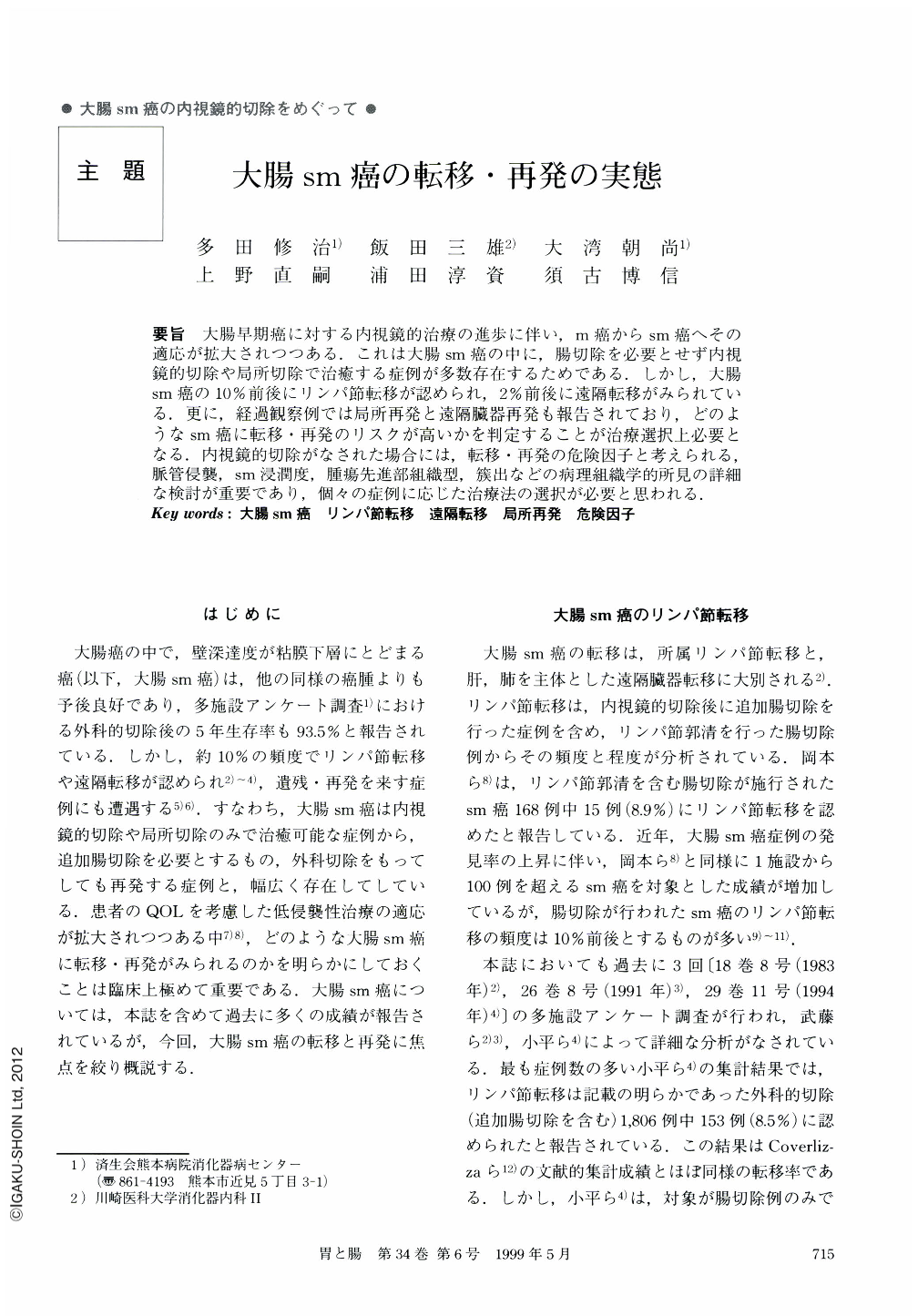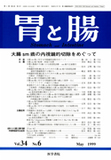Japanese
English
- 有料閲覧
- Abstract 文献概要
- 1ページ目 Look Inside
要旨 大腸早期癌に対する内視鏡的治療の進歩に伴い,m癌からsm癌へその適応が拡大されつつある.これは大腸sm癌の中に,腸切除を必要とせず内視鏡的切除や局所切除で治癒する症例が多数存在するためである.しかし,大腸sm癌の10%前後にリンパ節転移が認められ,2%前後に遠隔転移がみられている.更に,経過観察例では局所再発と遠隔臓器再発も報告されており,どのようなsm癌に転移・再発のリスクが高いかを判定することが治療選択上必要となる.内視鏡的切除がなされた場合には,転移・再発の危険因子と考えられる,脈管侵襲,sm浸潤度,腫瘍先進部組織型,簇出などの病理組織学的所見の詳細な検討が重要であり,個々の症例に応じた治療法の選択が必要と思われる.
In recent years, endoscopic resection has become the preferred technique for removing many early colorectal cancers because of the low morbidity and mortality rate. Whether endoscopic resection alone or further colectomy is the appropriate management of the patient with submucosal invasive cancer is a controversial issue. Lymph node metastasis occurs in approximately 10 per cent of cases with submucosal invasive cancer, and distant metastasis is present at about 2 per cent of them. Local recurrence and metachronous distant metastasis occasionally occur in cases with submucosal invasive cancer after endoscopic resection. Because the decision concering additional colectomy should be based on estimation of the risk of metastasis and reoccurrence, close histological examinations are necessary to evaluate the risk factors such as vessel permeation, level of invasion, grade of the submucosal invasive front of the carcinoma, and sprouting growth pattern at the time of endoscopic treatment. If the lesion is proved to invade the submucosa after endoscopic resection, a further surgical resection should be considered in the cases with high risk factors.

Copyright © 1999, Igaku-Shoin Ltd. All rights reserved.


